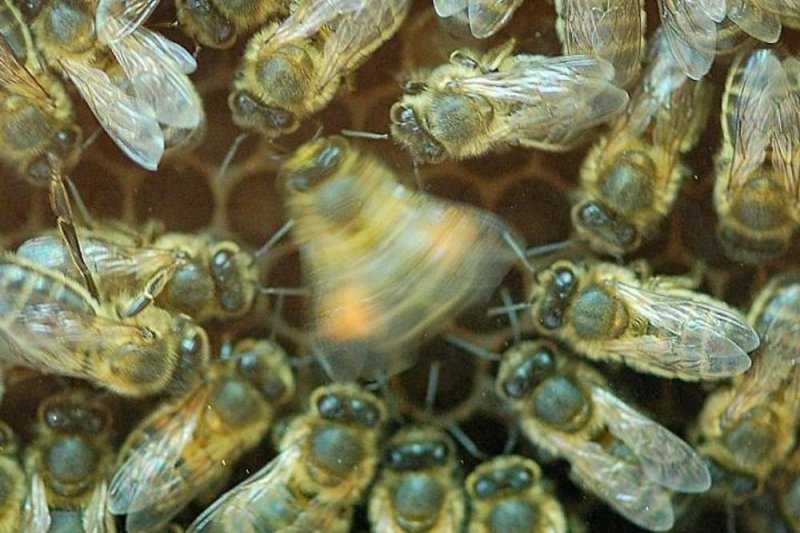When waggled dancing stops making sense, the audience inside the hive begins to ignore the dangers. Photo by Christoph Grüter/Johannes Gutenberg University Mainz
Feb. 22 (UPI) -- New research into the benefits of honeybee waggle dancing suggests the communicative rump-shaking isn't always useful. When the information conveyed by waggle dancing is irrelevant or nonsensical, bees ignore it.
Evolutionary biologists think bees have been waggle dancing for 20 million years. But a new study suggests the unique form of communication is often ineffective -- and humans' influence on the environment could be to blame.
In a series of experiments, researchers at the Johannes Gutenberg University Mainz in Germany manipulated bee colonies to confuse both waggle dancers and their audience. Scientists reoriented a hive horizontally and prevented light from shining through the honeycomb. The disoriented waggle dancers were unable to provide useful information to the rest of the hive.
From another group of hives, researchers removed aging foragers, the bees that perform the waggle dance after finding rich sources of food. Hives that were robbed of the waggle dance language produced more honey than hives hosting confused waggle dancing bees.
"We were expecting to confirm that dance language was important, but our results were the exact opposite," Robbie I'Anson Price, Mainz researcher and lead study author, said in a news release. "I suspect that the bees probably lose interest when confronted with a disoriented dance, and they go out to search for food on their own initiative."
During the 18-day experiment, bees without the waggle dance went on significantly longer foraging flights and produced 30 percent more honey. Researchers shared the results of the experiments this week in the journal Science Advances.
Researchers estimate the importance of waggle dancing and the information it conveys has been diminished by humans' influence on the environment. In suburban and many agricultural environs, sources of food are not largely concentrated, but small and dispersed.
If a waggle dancer can point a hive to a local apple tree, the information could prove beneficial to the colony. But if most of the local food sources are sparsely distributed flowering plants in neighborhood gardens or roadsides, bees are better off ignoring waggle dancers and foraging on their own.
"In our opinion, the behavior we observed can be primarily explained in terms of how much time the bees save," said Christoph Grüter, a behavioral ecologist at Mainz University. "Our results raise the possibility that humans have created environments to which the waggle dance language is not well adapted."
During their observations, researchers noticed bees in the hives featuring confused waggle dancers stopped paying attention to the information after they realized it was faulty or didn't make sense. In future studies, Grüter and his colleagues hope to more closely examine the ability of honeybees to filter different pieces of information.















